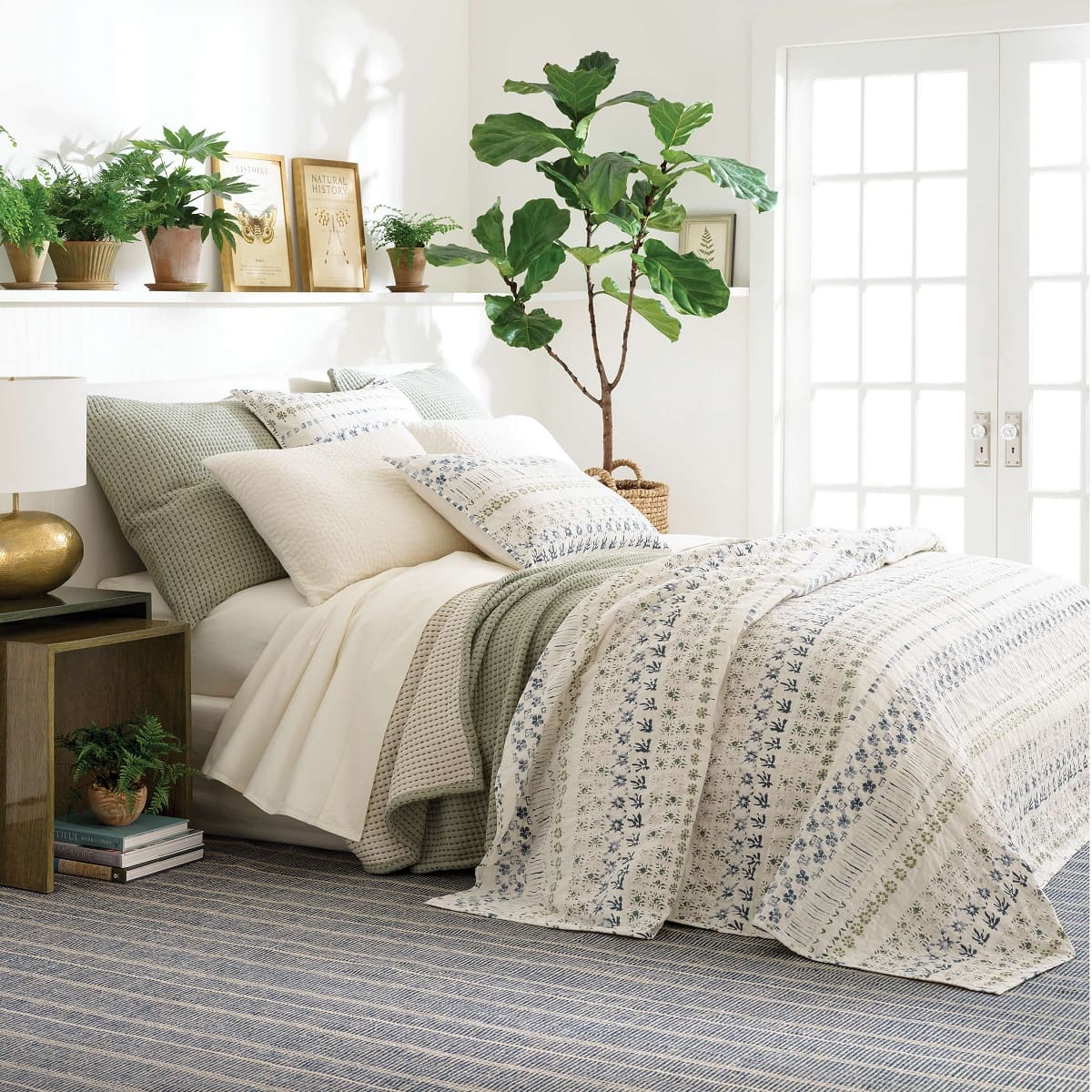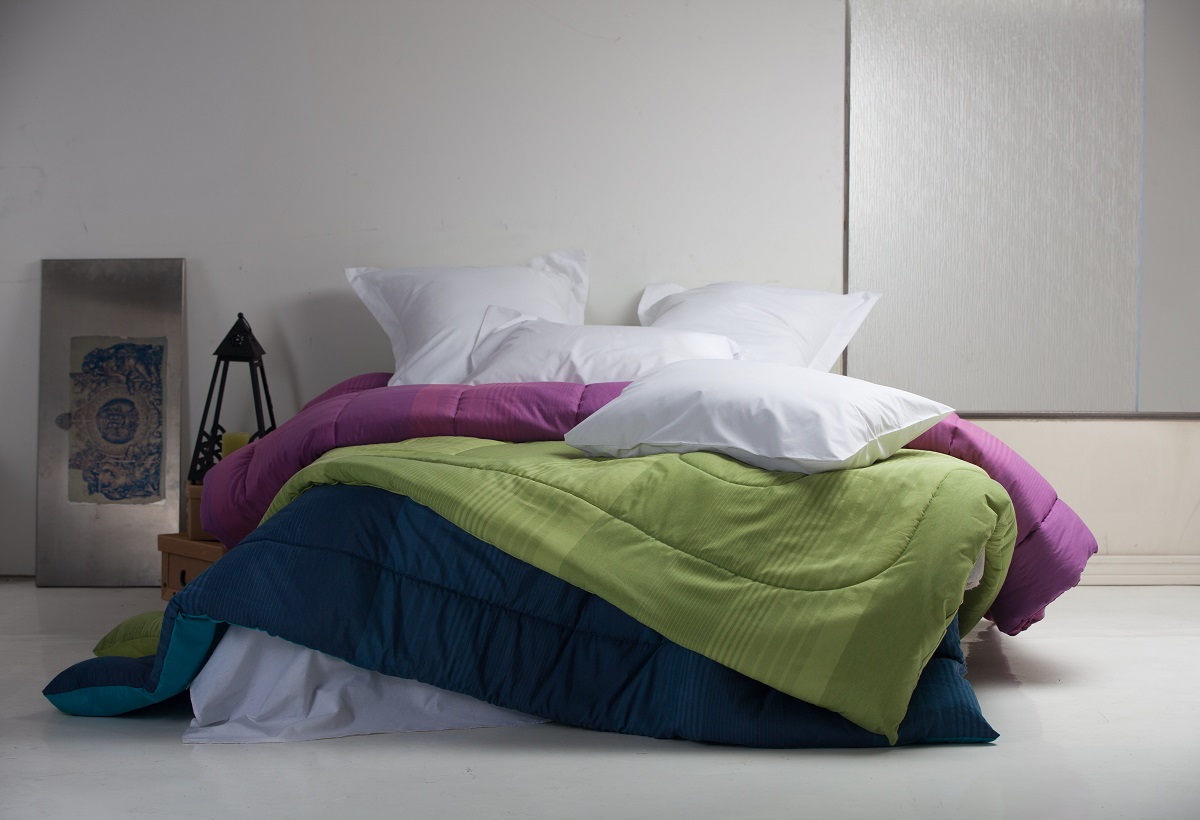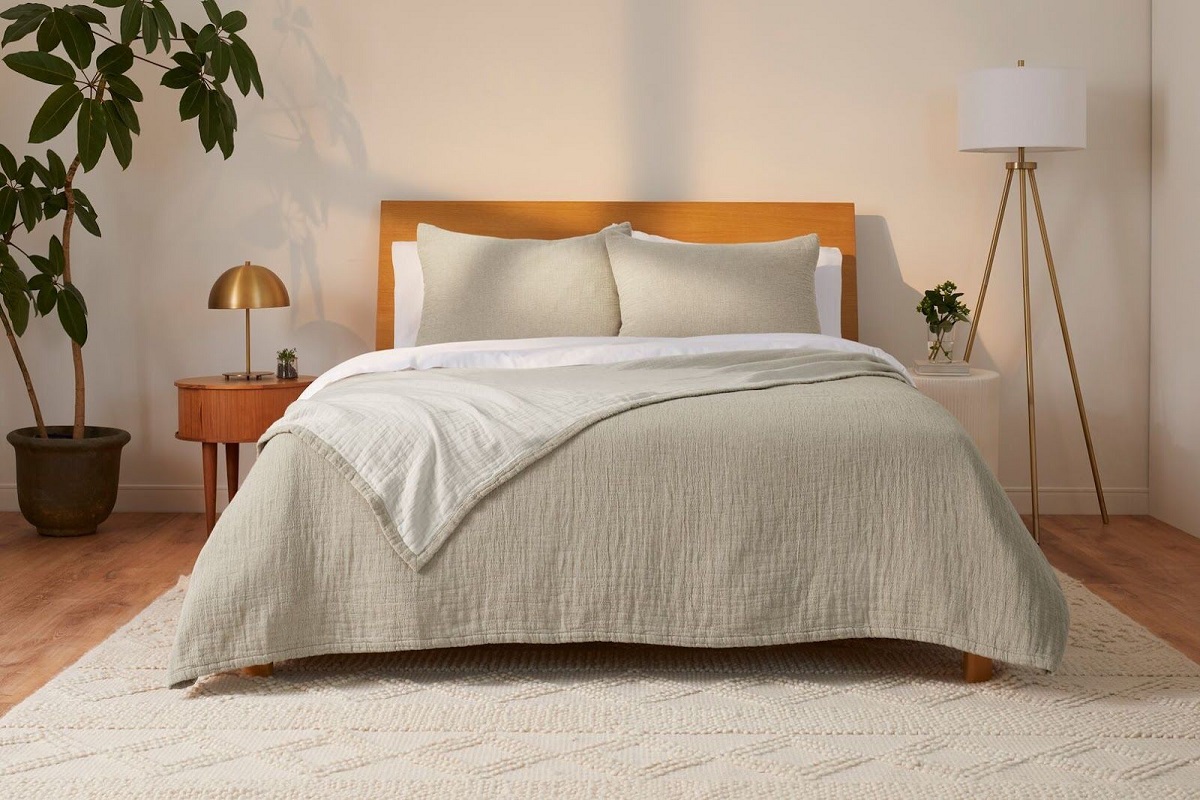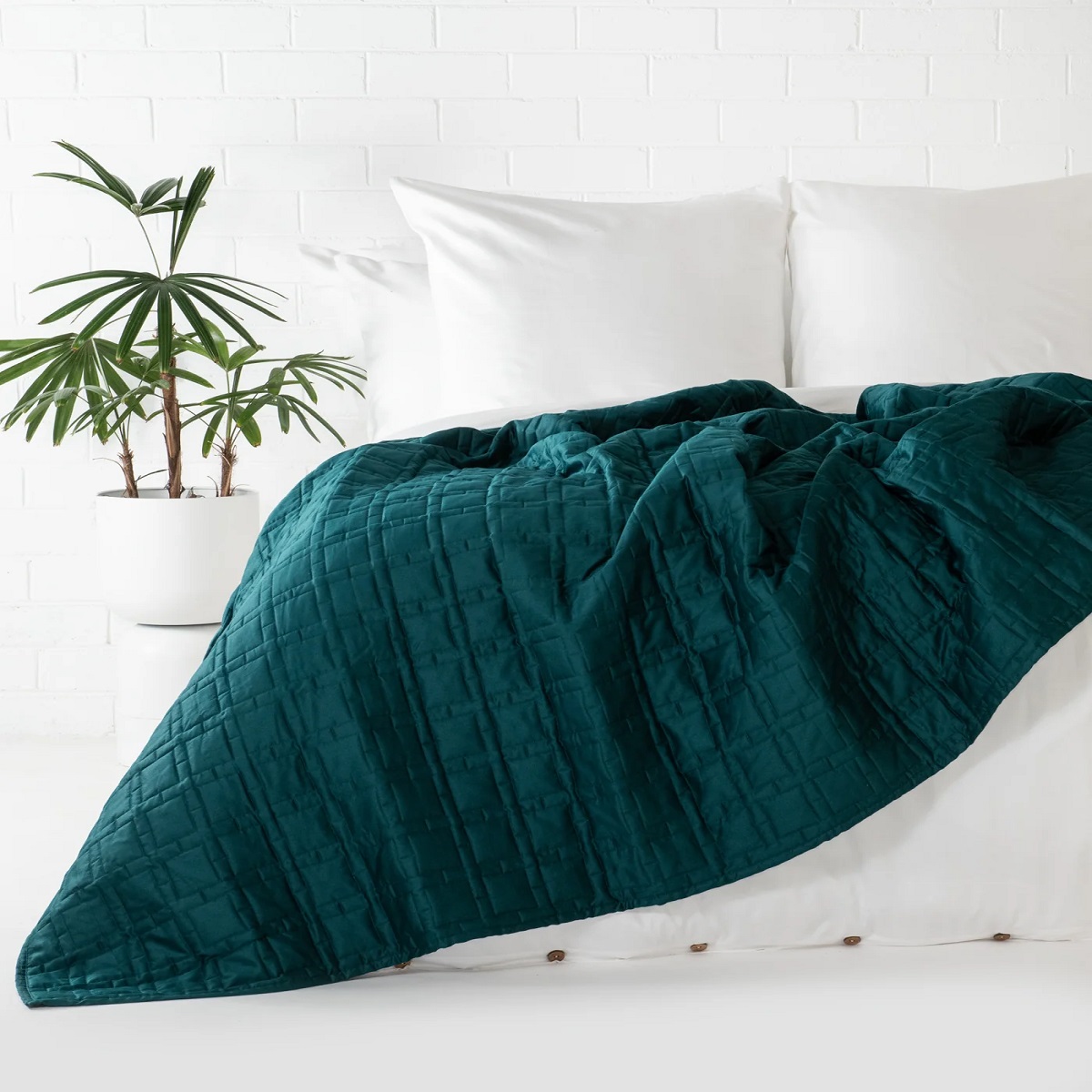Home>Articles>What Is The Difference Between A Duvet And A Quilt


Articles
What Is The Difference Between A Duvet And A Quilt
Modified: January 18, 2024
Discover the key distinctions between a duvet and a quilt in this informative articles. Gain insights into their unique features and find the perfect bedding option for your home.
(Many of the links in this article redirect to a specific reviewed product. Your purchase of these products through affiliate links helps to generate commission for Storables.com, at no extra cost. Learn more)
Introduction
When it comes to bedding, there are a plethora of options to choose from. Among the most popular choices are duvets and quilts. While they both serve the purpose of providing warmth and comfort during sleep, there are noticeable differences between the two. Understanding these differences can help you make an informed decision when selecting the right bedding for your needs.
In this article, we will delve into the nuances of duvets and quilts, highlighting their features, construction, materials, maintenance, and more. By the end, you will have a clear understanding of the distinctions between the two, enabling you to choose the best option that suits your preferences and sleeping requirements.
So, let’s dive in and explore the fascinating world of duvets and quilts!
Key Takeaways:
- Duvets offer easy maintenance and versatile temperature regulation, making them ideal for year-round use and personalized style preferences.
- Quilts excel in decorative appeal and craftsmanship, adding a touch of elegance to any bedroom while offering moderate insulation and versatile usage options.
Definition of a Duvet
A duvet, also commonly known as a comforter, is a type of bedding that consists of a soft, flat bag filled with natural or synthetic materials. It is designed to be used as the top layer of a bed, providing warmth and insulation during sleep. Duvets are typically larger in size than a quilt, covering the entire bed and hanging over the edges.
One of the distinguishing features of a duvet is its removable cover, known as a duvet cover. The duvet cover acts as a protective layer and can be easily taken off and washed separately. This allows for easy cleaning and also gives you the opportunity to change the look of your bedding by swapping out different duvet covers.
Duvets come in various thicknesses or “togs,” indicating their level of warmth. Togs range from lightweight options suitable for summer use to thicker, more insulated duvets perfect for colder climates. Many duvets also feature corner loops or ties that can be used to secure the duvet in place within a duvet cover.
Overall, a duvet offers a cozy and luxurious sleeping experience. Its soft and fluffy nature provides exceptional comfort, making it a popular choice in many households.
Definition of a Quilt
A quilt is a type of bedding that consists of three layers: a top fabric, a middle layer of batting (also known as wadding), and a bottom fabric layer. These layers are stitched together using a decorative pattern of stitching known as quilting. The quilting serves both a practical purpose, keeping the layers in place, and an aesthetic purpose, creating intricate designs on the surface of the quilt.
Unlike duvets, quilts are typically smaller in size and do not hang over the edges of the bed. They are designed to be placed on top of a flat sheet and can be used either as the main cover or as an additional layer for extra warmth. Quilts often come with matching pillow shams or coordinated pillows to complete the look.
Traditionally, quilts are made by hand, with each stitch meticulously crafted by skilled quilters. However, machine-made quilts are also widely available, offering more accessible options with consistent stitching patterns.
Quilts are known for their exquisite craftsmanship and the wide array of designs and patterns available. They can feature geometric shapes, floral motifs, or even personalized designs, allowing for a unique and individualized touch to your bedding.
While duvets focus primarily on providing warmth and comfort, quilts offer a combination of functional and decorative qualities. They add a touch of beauty and character to any bedroom setting, elevating the overall aesthetic appeal.
Now that we have explored the definitions of duvets and quilts, let’s dive deeper into their construction and design differences!
Construction and Design Differences
When it comes to the construction and design of duvets and quilts, there are distinct differences that set them apart.
A duvet, as mentioned earlier, consists of a soft, flat bag filled with materials such as down feathers, synthetic fibers, or a combination of both. The filling is evenly distributed throughout the duvet, ensuring consistent warmth. The duvet cover acts as a protective layer and is typically made of a soft, breathable fabric, often with decorative patterns or colors.
On the other hand, a quilt has a more layered construction. It comprises a top fabric layer, a middle layer of batting or padding, and a bottom fabric layer. The layers are stitched together using quilting techniques, which not only hold the layers in place but also create decorative patterns and designs. The top layer of the quilt can feature a variety of fabrics, including cotton, silk, or polyester, while the bottom layer is typically a solid fabric.
The stitching patterns on quilts can vary greatly, ranging from simple geometric shapes to intricate floral motifs or personalized designs. This allows for endless creativity and customization when it comes to quilt designs. Duvets, on the other hand, are usually more simple and uniform in their design, with the focus primarily on the duvet cover.
In terms of aesthetic appeal, quilts are often considered more visually striking due to their intricate designs and the artistry involved in quilting. They can be considered a form of art, with quilters incorporating their creativity and skills to create beautiful and unique pieces. Duvets, while they can come in a variety of patterns and colors, typically have a simpler and more understated design.
These construction and design differences give duvets and quilts their own unique characteristics and allow individuals to choose the option that best aligns with their personal style preferences and bedroom decor.
Materials Used
When it comes to the materials used in the construction of duvets and quilts, there is a range of options available to suit different preferences and needs.
For duvets, the filling material plays a crucial role in determining the warmth, weight, and overall comfort. The most common types of filling used in duvets are:
- Down: This refers to the soft and fluffy feathers found underneath the outer feathers of ducks and geese. Down duvets are known for their exceptional insulation and lightweight feel.
- Synthetic Fibers: Synthetic materials such as polyester or microfiber are commonly used as an alternative to down. Synthetic duvets are hypoallergenic and more affordable, making them a popular choice for those with allergies or budget constraints.
- Feather Blend: Some duvets combine a blend of down and feathers to offer a balance between warmth and support. The feathers provide structure and durability, while the down ensures softness and insulation.
Quilts, on the other hand, offer a wider variety of fabric options for both the top and bottom layers. Some common choices for quilt fabrics include:
- Cotton: Cotton is a popular fabric choice for quilts due to its breathability, softness, and durability. It is available in a wide range of patterns and colors.
- Silk: Silk quilts offer a luxurious feel and a smooth, lustrous appearance. Silk has excellent temperature-regulating properties, making it suitable for both warm and cold climates.
- Polyester: Polyester fabrics are often used for their affordability, easy maintenance, and wide range of design options. They can mimic the look and feel of natural fibers while providing durability.
It is worth noting that both duvets and quilts can come in various blends or combinations of materials to offer specific benefits. Additionally, there are eco-friendly options available, such as organic cotton or recycled polyester, for individuals who prioritize sustainability.
Ultimately, the choice of materials will depend on individual preferences, budget, and desired level of comfort and warmth.
When choosing between a duvet and a quilt, consider the level of warmth you need. Duvets are usually thicker and provide more insulation, while quilts are lighter and better for warmer climates or layering.
Warmth and Insulation
When it comes to warmth and insulation, both duvets and quilts offer different levels of coziness based on their construction and materials.
Duvets, especially those filled with down, are known for their excellent insulation properties. The down feathers in a duvet trap warm air, creating a layer of insulation that keeps you comfortably warm during colder nights. The thickness of the duvet, indicated by its tog rating, determines its level of warmth. Higher tog ratings indicate thicker and more insulated duvets, suitable for colder climates or individuals who tend to get cold easily.
Quilts, on the other hand, offer a slightly different approach to warmth. The layers of fabric and batting in a quilt provide a moderate level of insulation. While not as thick or lofty as a duvet, the combination of the layers creates a cozy barrier that helps retain body heat. Quilts are great for individuals who prefer a lighter cover or live in milder climates.
It’s important to note that the level of warmth provided by a duvet or quilt can be further adjusted by using additional layers such as blankets or throws. This allows for customization depending on personal preferences and seasonal variations in temperature.
Ultimately, the choice between a duvet and a quilt in terms of warmth and insulation depends on factors such as your location, personal sleep preferences, and the seasonality of your climate.
Now, let’s move on to discussing the cleaning and maintenance requirements for duvets and quilts.
Cleaning and Maintenance
When it comes to cleaning and maintaining duvets and quilts, there are some important differences to consider.
Starting with duvets, one of the key advantages is the presence of a removable duvet cover. The duvet cover acts as a protective layer, keeping the duvet clean and reducing the need for frequent washing. When the duvet cover becomes dirty, it can be easily removed and laundered separately. Most duvet covers are machine washable, making the cleaning process convenient and hassle-free. As for the duvet itself, it is recommended to clean it occasionally, following the manufacturer’s instructions. Depending on the filling material, duvets may require professional cleaning or can be safely washed in a large-capacity washing machine.
Quilts, on the other hand, require a bit more care when it comes to cleaning. Due to the intricate quilting patterns, machine washing is generally not recommended as it may affect the stitching and overall appearance of the quilt. Instead, quilts should be spot cleaned or dry cleaned to maintain their shape and design. It is essential to consult the care instructions provided by the quilt manufacturer to ensure proper cleaning and maintenance.
Regular maintenance for both duvets and quilts includes periodically fluffing and airing them out to maintain their loft and freshness. This helps redistribute the filling and prevents it from becoming lumpy or flat over time. Additionally, using a duvet cover or a quilt cover can offer another layer of protection, reducing the need for frequent cleaning and prolonging the lifespan of your bedding.
Now that we have discussed the cleaning and maintenance aspect, let’s move on to comparing the cost factors between duvets and quilts.
Cost Comparison
When it comes to cost, there are differences to consider between duvets and quilts.
Duvets tend to vary in price depending on factors such as the filling material, fill power, thread count of the duvet cover, and brand. Generally, duvets filled with down feathers tend to be more expensive compared to those filled with synthetic materials. The higher the fill power, which measures the quality and loftiness of the down, the higher the price. Additionally, duvets with higher thread count covers or those from luxury brands may also come at a higher price point. However, there are duvet options available at various price ranges, allowing for flexibility depending on your budget.
Quilts, on the other hand, typically have a broader range of prices due to the various materials, designs, and craftsmanship involved. Handmade quilts or those with intricate designs and high-quality fabrics can be more expensive. Machine-made quilts or those with simpler designs can offer more affordable options. The price will also be influenced by factors such as the size of the quilt and the brand.
In general, quilts can offer a wider range of price points depending on the level of craftsmanship and materials used. Duvets can also range in price, but there may be fewer variations based on the filling and thread count.
Ultimately, the cost of both duvets and quilts will depend on the specific factors mentioned above as well as personal preferences and the desired quality and longevity of the bedding.
Now, let’s delve into the versatility and usage of duvets and quilts.
Versatility and Usage
When it comes to versatility and usage, both duvets and quilts have distinct qualities that make them suitable for different preferences and needs.
Duvets are known for their versatility in terms of temperature regulation. They are available in various tog ratings, allowing you to choose the right level of warmth for different seasons. In warmer months, you can opt for a lightweight duvet or use the duvet cover on its own as a thin blanket. During colder months, you can switch to a thicker duvet or layer it with additional blankets for extra insulation. This adaptability makes duvets ideal for year-round use.
Quilts, on the other hand, offer versatility in terms of their decorative appeal. They can be used as the focal point of your bedding ensemble, adding a touch of elegance and character to the room. Quilts are often seen as a statement piece, showcasing intricate quilt patterns and designs. They can be layered with other blankets or throws for added warmth, making them suitable for both decorative and practical purposes. Additionally, quilts can also be used as versatile home decor items, acting as wall hangings or draped over furniture to enhance the ambiance of a space.
Both duvets and quilts can be used in a variety of settings, including bedrooms, guest rooms, hotels, and vacation rentals. They offer a level of comfort and style that can enhance the overall sleeping experience and create a cozy atmosphere.
Now that we have discussed the versatility and usage of duvets and quilts, let’s summarize the key points before concluding.
Conclusion
Duvets and quilts are both popular choices for bedding, offering warmth, comfort, and style. Understanding the differences between the two can help you make an informed decision based on your preferences, needs, and budget.
A duvet is a soft, flat bag filled with materials such as down or synthetic fibers. It is accompanied by a removable duvet cover, providing ease of cleaning and versatility in design. Duvets offer excellent insulation and are available in various tog ratings to cater to different temperature preferences.
A quilt, on the other hand, consists of three layers – a top fabric, a middle layer of batting, and a bottom fabric – stitched together with decorative patterns. Quilts are known for their intricate designs and craftsmanship, adding a touch of beauty to any bedroom. While they may offer a moderate level of insulation, quilts excel in versatility and decorative appeal.
When it comes to cleaning and maintenance, duvets are easier to care for due to the removable duvet cover. Quilts, on the other hand, may require spot cleaning or professional dry cleaning to preserve their design and structure.
In terms of cost, duvets can range in price based on factors such as the filling material and thread count of the cover. Quilts have a wider price range depending on the materials used and the intricacy of the design.
Both duvets and quilts have their own unique advantages and can be used in various settings. Duvets offer versatility in temperature regulation, making them suitable for year-round use. Quilts, on the other hand, offer versatility in decorative appeal, acting as both functional bedding and artistic home decor.
In conclusion, the choice between a duvet and a quilt ultimately comes down to personal preference, sleeping habits, and style preferences. Consider factors such as warmth, maintenance, cost, and versatility when making your decision. By understanding the distinctions between duvets and quilts, you can select the perfect bedding option to create a cozy and inviting sleep environment.
Frequently Asked Questions about What Is The Difference Between A Duvet And A Quilt
Was this page helpful?
At Storables.com, we guarantee accurate and reliable information. Our content, validated by Expert Board Contributors, is crafted following stringent Editorial Policies. We're committed to providing you with well-researched, expert-backed insights for all your informational needs.














0 thoughts on “What Is The Difference Between A Duvet And A Quilt”